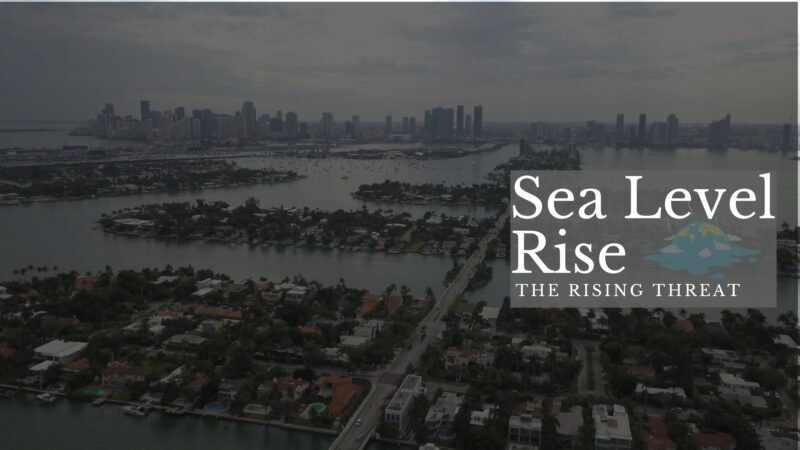Imagine a world where the rhythm of the tides becomes a menacing drumbeat, where the ebb and flow of the ocean’s edge creeps ever inward, reshaping the contours of our coastlines.
This is the world we face as sea level rise, a stark reality of climate change, continues to accelerate. As the mercury climbs higher on our global thermometer, so too does the level of our seas, threatening to redraw the map of our world in ways that are far from benign.
The implications of this watery march are profound and far-reaching. Picture coastal communities, where the rhythm of life is dictated by the sea, now facing an unrelenting onslaught of floods, the land beneath them eroding away, and their homes and livelihoods increasingly at risk.
Envision the displacement of people from low-lying areas, their lives uprooted by a force that respects no boundaries. Consider too the damage to vital coastal infrastructure, the disruption to industries like tourism and fishing, and the loss of precious habitats that nurture a diverse array of species.
In this journey, we invite you to delve into the depths of sea level rise, a complex and urgent issue that is as much about our relationship with the environment as it is about the environment itself. We’ll navigate through its causes, chart its impacts, and explore potential solutions.
Our goal is to illuminate this critical issue, emphasizing the urgency of collective action and the power of informed decision-making in our shared fight against climate change. Join us as we chart a course toward understanding, and ultimately addressing, this watery warning for our future.
A Deep Dive into Sea-Level Rise
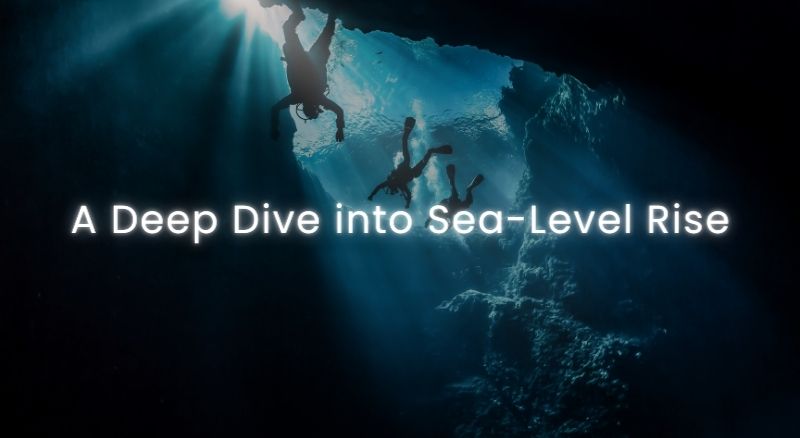
Sea level rise refers to the long-term increase in the average level of the ocean’s surface. It occurs primarily due to two factors: thermal expansion caused by the warming of the ocean, and the influx of water from melting glaciers and ice sheets. Both of these processes are driven by the ongoing increase in global temperatures, a consequence of human-induced climate change.
Thermal expansion occurs as seawater absorbs heat, causing it to expand and take up more space. This process accounts for about half of the observed sea level rise to date. The other significant contributor is the melting of glaciers and ice sheets, particularly those in Greenland and Antarctica. As these massive ice bodies melt, they add vast amounts of water to the ocean, causing sea levels to rise.
It’s important to note that sea level rise is not uniform across the globe. Factors such as ocean currents, atmospheric pressure, and the gravitational effects of melting ice can cause sea levels to rise more in some areas than others. This variability adds another layer of complexity to the issue, making it a challenging problem to address.
Historical Perspective
Historical data shows that sea levels have been rising at an increasing rate over the past century. According to the National Oceanic and Atmospheric Administration (NOAA), the global mean sea level has risen by about 8-9 inches since 1880, with about a third of that rise occurring in the last two and a half decades.
The acceleration in sea level rise is largely due to the increasing rate of thermal expansion and ice melt caused by rising global temperatures. Human activities, particularly the burning of fossil fuels and deforestation, have significantly increased the concentration of greenhouse gases in the atmosphere, leading to global warming.
The Intergovernmental Panel on Climate Change (IPCC) projects that under high-emission scenarios, the global mean sea level could rise by more than a meter by the end of the century. This projection underscores the urgent need for action to reduce greenhouse gas emissions and mitigate the impacts of sea level rise.
Impact of Sea Level Rise on Coastal Communities
- Rising sea levels pose a significant threat to coastal communities around the world, leading to increased flooding, coastal erosion, and saltwater intrusion into freshwater resources.
- Cities like Miami and New Orleans in the United States are experiencing more frequent and severe flooding due to sea level rise.
- Small island nations in the Pacific, such as the Marshall Islands and Kiribati, face the existential threat of becoming uninhabitable.
- In Bangladesh, millions of people living in low-lying areas are at risk of displacement.
- Many coastal communities are already grappling with the impacts of sea level rise, and these impacts are likely to worsen in the coming decades without significant mitigation and adaptation efforts.
Impact on Ecosystems and Wildlife
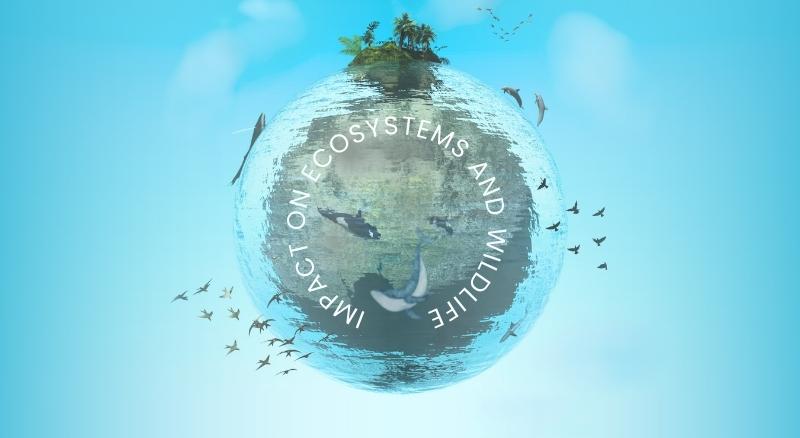
Sea level rise also has significant impacts on various ecosystems, including marine, coastal, and terrestrial habitats. These impacts can have far-reaching effects on biodiversity and the services these ecosystems provide.
Coastal ecosystems, such as mangroves and salt marshes, are particularly vulnerable to sea level rise. These ecosystems provide crucial habitats for a wide range of species and offer valuable services such as carbon sequestration and storm protection. However, rising sea levels can lead to habitat loss, changes in salinity levels, and increased vulnerability to storm surges.
Marine ecosystems are also affected by the rise, particularly through its impacts on coastal habitats and the increased frequency and intensity of storm events. For example, coral reefs, which are already under stress from warming waters and ocean acidification, can be further damaged by strong storms and changes in water depth.
Terrestrial species that rely on coastal habitats, including numerous bird species and sea turtles, are also affected by sea level rise. Changes in nesting sites due to rising sea levels and increased storm activity can impact the survival of these species.
Economic Consequences
- Sea level rise leads to direct costs related to property damage and coastal protection measures.
- Indirect costs can arise from changes in industry outputs and potential population displacements.
- Coastal regions, often densely populated and economically important, face an increased risk of flood damage.
- The cost of protecting these areas, through measures such as sea walls and improved drainage systems, can be substantial.
- Industries such as tourism and fishing can be impacted. Coastal tourism destinations may suffer from beach erosion, damage to infrastructure, and changes in local ecosystems.
- Fishing communities may be affected by changes in fish distribution and productivity due to altered habitats and increased storm activity.
Health and Social Implications
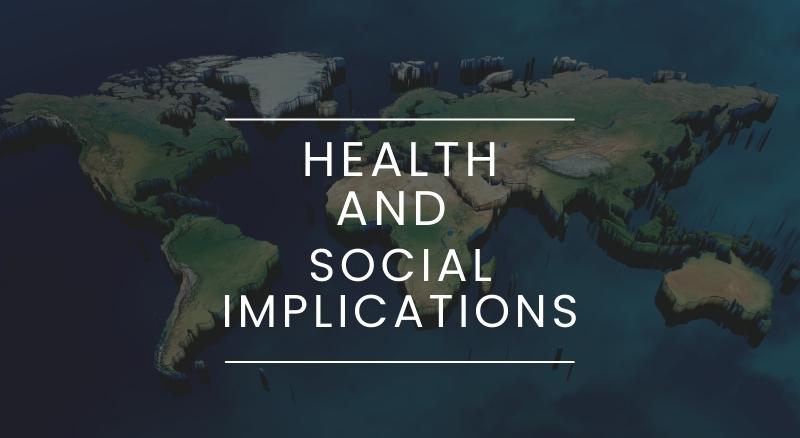
The health and social implications of sea level rise are often overlooked but are no less significant. These implications include potential population displacements, increased risk of waterborne diseases, and impacts on mental health.
Rising sea levels can lead to the displacement of people living in low-lying coastal areas. This displacement can result in social and mental health issues, including stress, anxiety, and depression. Displaced populations may also face challenges such as loss of livelihoods, social isolation, and increased vulnerability to exploitation.
It can also increase the risk of waterborne diseases. Flooding can contaminate freshwater supplies and increase the prevalence of disease vectors, leading to outbreaks of diseases such as cholera and dengue fever.
Addressing these health and social implications requires a holistic approach that considers social equity and the needs of the most vulnerable populations. This includes ensuring access to healthcare and social services, protecting rights and livelihoods, and promoting community resilience and adaptation.
Current Efforts to Mitigate
Efforts to mitigate sea level rise are underway at various levels, from local initiatives to international agreements. These efforts include both technological solutions, such as sea walls and improved drainage systems, and policy measures, such as land-use planning and greenhouse gas emission reductions.
In the Netherlands, a country known for its innovative water management strategies, extensive systems of dikes, dams, and storm surge barriers have been constructed to protect against sea level rise and flooding. In the Maldives, an island nation threatened by rising sea levels, efforts are being made to build artificial islands and relocate communities to safer areas.
On the policy front, the Paris Agreement, a landmark international treaty on climate change, includes commitments to limit global warming and adapt to its impacts, including sea level rise. Many countries have also developed national adaptation plans that include strategies to address sea level rise.
While these efforts are crucial, much more needs to be done. Addressing sea level rise requires a combination of mitigation measures to reduce greenhouse gas emissions and adaptation measures to cope with the changes that some people refuse to believe.
The Role of International Cooperation
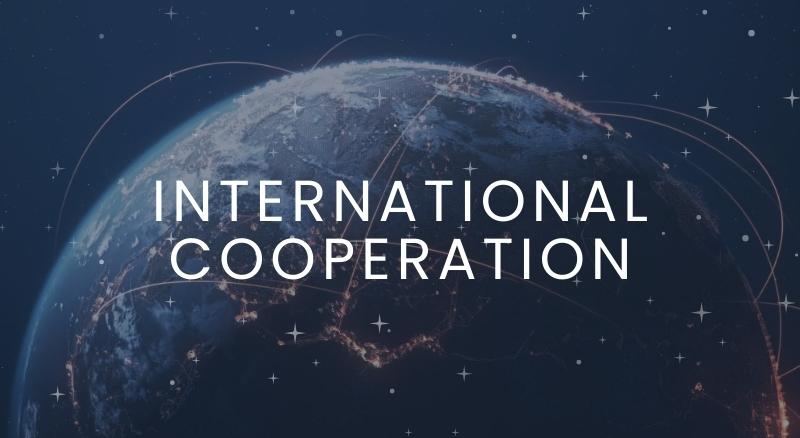
International cooperation is crucial in addressing sea level rise. This issue is a global challenge that transcends national borders, and its impacts are felt most acutely by small island developing states and low-lying coastal countries, many of which have contributed least to the problem.
Several international agreements and initiatives are aimed at tackling sea level rise. The United Nations Framework Convention on Climate Change (UNFCCC) and its Paris Agreement provide a framework for international cooperation on climate change, including sea level rise. The Sendai Framework for Disaster Risk Reduction also includes measures to address sea level rise and its impacts.
In addition to these formal agreements, international cooperation can take many forms, including knowledge sharing, capacity building, and financial support. For example, the Green Climate Fund, established under the UNFCCC, provides financial support to developing countries to help them adapt to the impacts of climate change, including sea level rise.
Future Predictions and Projections
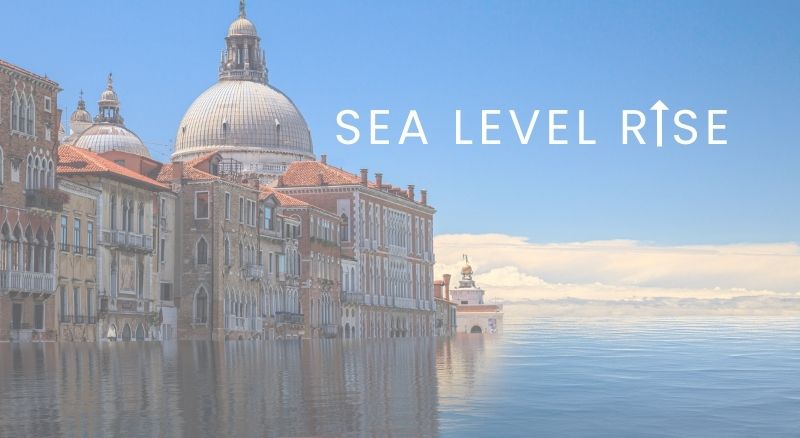
Future predictions for sea level rise are based on a range of scenarios, reflecting different assumptions about greenhouse gas emissions, global warming, and ice melt rates. According to the Intergovernmental Panel on Climate Change (IPCC), the global mean sea level could rise by over a meter by 2100 under high emission scenarios.
These projections highlight the potential consequences if no action is taken. Rising sea levels could inundate coastal cities, displace millions of people, and cause significant economic damage. They could also lead to the loss of valuable ecosystems and the extinction of many species.
However, these projections are not inevitable. They underscore the urgent need for action to reduce greenhouse gas emissions and adapt to the changes that are already underway. With concerted action and international cooperation, it is possible to limit sea level rise and its impacts.
Call to Action: What We Can Do
Addressing sea level rise requires action at all levels, from individuals and communities to governments and international organizations. There are many ways we can contribute to this effort.
Individuals can reduce their carbon footprint by making lifestyle changes such as using energy-efficient appliances, reducing car use, and eating less meat. They can also support political leaders and organizations that prioritize climate action, and stay informed about the issue.
Communities can implement local adaptation measures, such as building sea walls, restoring natural coastal defenses, and improving water management systems. They can also promote climate education and awareness, and support local initiatives to reduce greenhouse gas emissions.
Governments have a crucial role to play in enacting policies to reduce greenhouse gas emissions, investing in climate research and innovation, and supporting vulnerable communities in adapting to sea level rise. This includes implementing and strengthening commitments under international climate agreements.
Final Words
It is a pressing issue that poses significant challenges for our future. It threatens coastal communities, ecosystems, and economies around the world, and its impacts are expected to intensify in the coming decades.
However, this challenge also presents an opportunity. It is a call to action for us to rethink our relationship with the environment, to innovate and adapt, and to work together towards a sustainable future.
Addressing sea level rise requires a collective effort. It requires us to reduce greenhouse gas emissions, to implement effective adaptation measures, and to support those most vulnerable to the impacts. It requires us to act with urgency, guided by the best available science.
As we navigate this challenge, let us remember that every action counts. Every effort to reduce emissions, every initiative to adapt to the changes, and every step towards international cooperation brings us closer to a sustainable future. The task may be daunting, but together, we can rise to the challenge.


